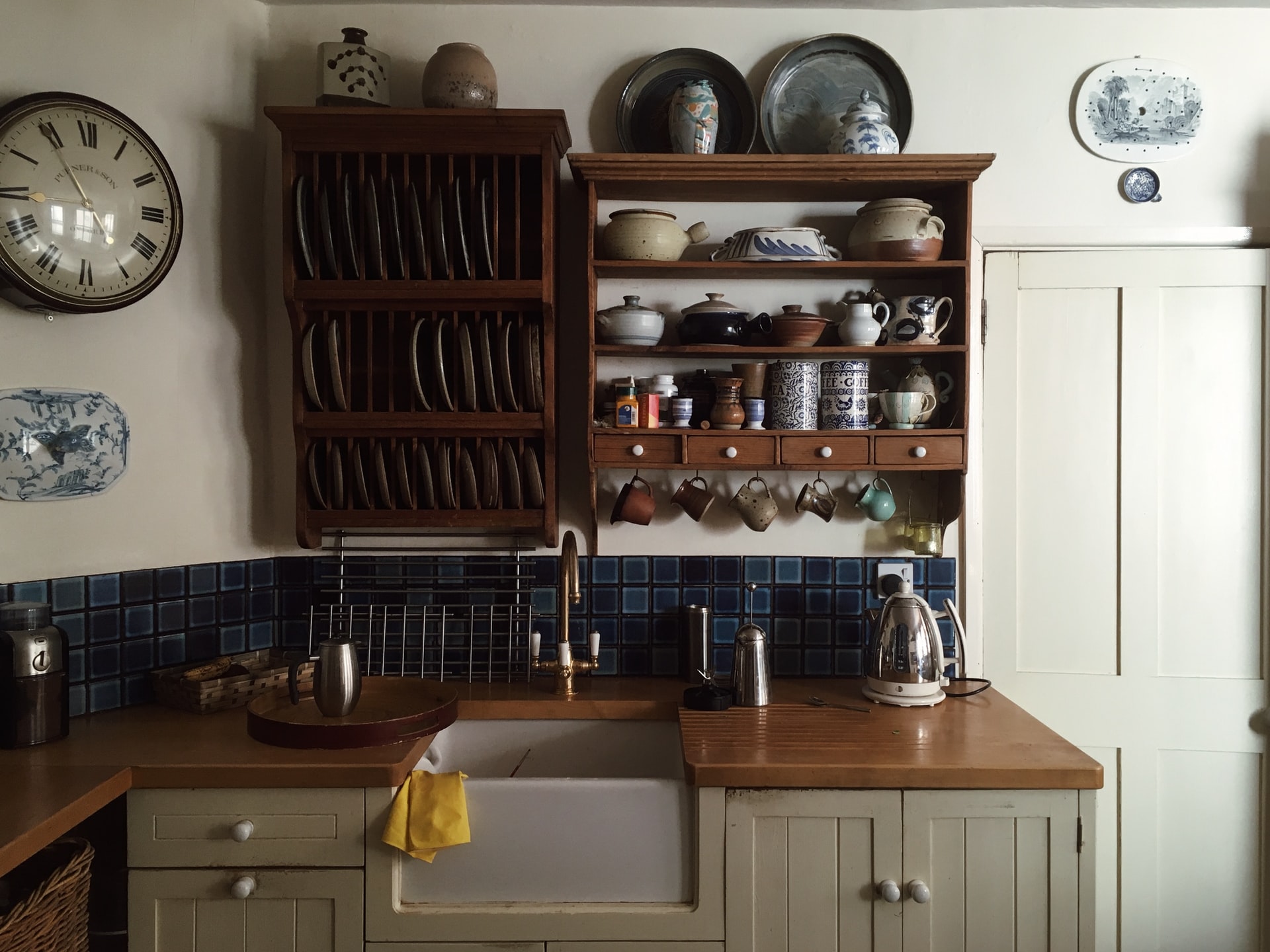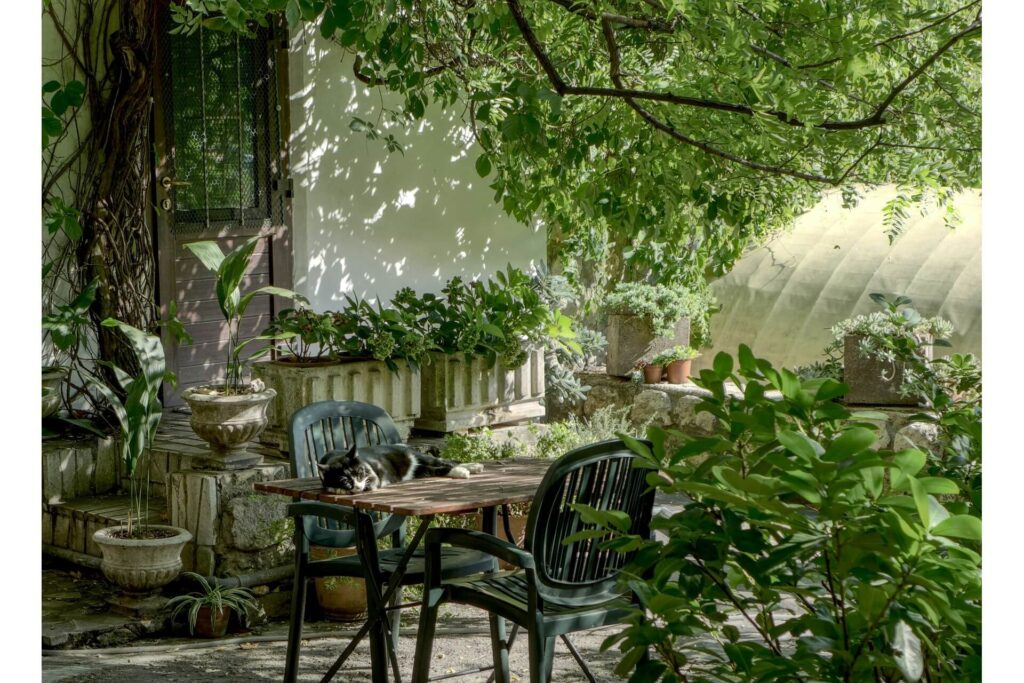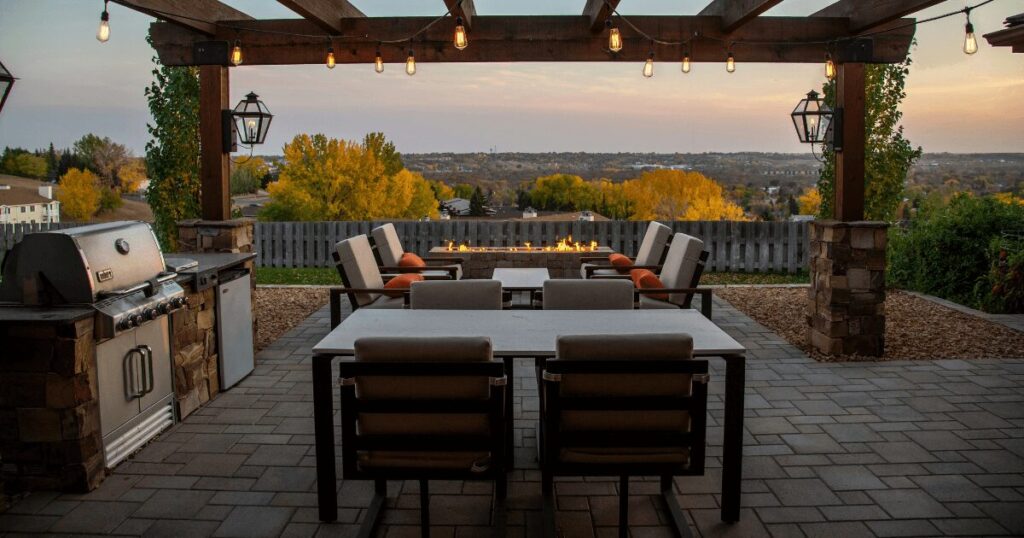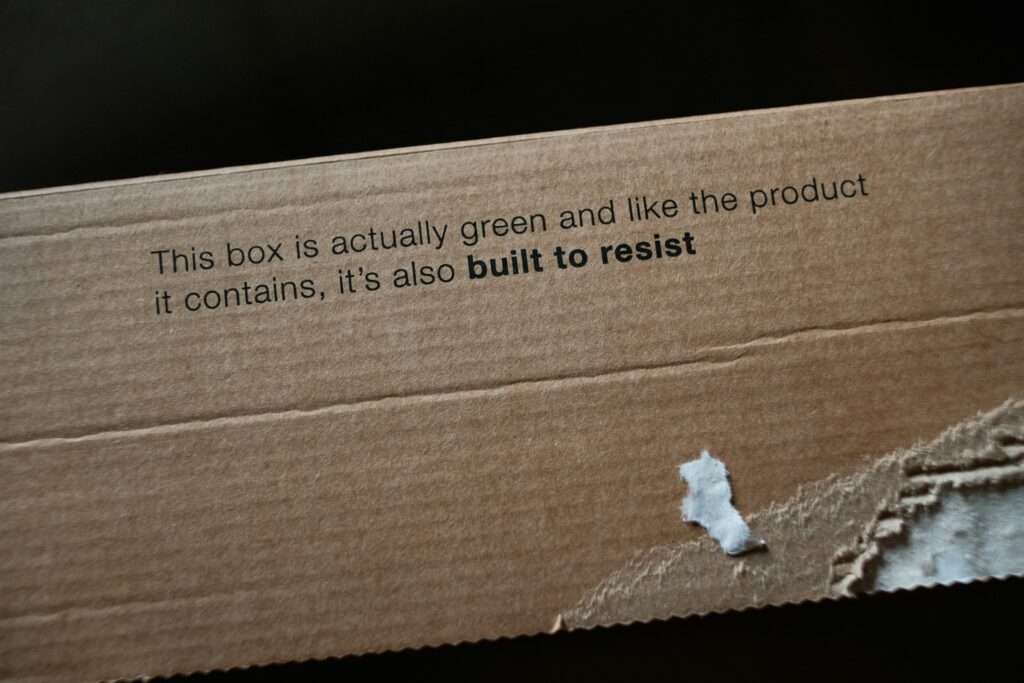
We are reader-supported. When you buy through links on our site, we may earn an affiliate commission.
If you’re looking to do a kitchen renovation and want to make it unique, you could base your design on an era of history.
The 1930s marked a significant time in history, with the Great Depression changing kitchens from closed-off servant areas to a part of the household. As suburban homes became more commonplace, having a kitchen for the homemaker’s use became much more common, and the designs and appliances used reflected this.
Though we’ve shaken off those old-fashioned values, we can still celebrate the unique designs found in that era.
Here are a few ways to transport your kitchen to the 1930s.
Farmhouse Sink
Still popular today, farmhouse sinks were created in the 17th century, when running water didn’t exist. Manufacturers designed the large, deep basins to hold water once it was collected from a source outside of the home, such as a well or river.
The original farmhouse sinks appeared first in Ireland and Britain. Each of the early versions had modifications depending on the area’s water availability. The Belfast sink had an overflow that allowed excess water to drain away, while the London sink was shallower and kept every last drop of water inside.
Due to the sink’s roominess, the farmhouse sink remained popular in homes that gained running water. By the 1930s, the sinks were modified with plumbing. Families used them to wash produce and do dishes. Many added features for these purposes, such as metal rack inserts for drying plates and drain captures for catching scraps for compost. Original farmhouse sinks rarely had a disposal, although you can certainly add one to yours if you prefer.
Modern homeowners still enjoy farmhouse sinks for their roominess, so they won’t be hard to find for your 1930s kitchen. For a truly traditional look, you’ll need to purchase a porcelain, soapstone or enamel sink to get the classic look to get the classic look. However, you can also find the large, deep basin design in sleek stainless steel.
Lots of Tile
Kitchens in the 1930s were known for their tile. Tile covered the floors and walls, with small tiles for backdrops being the most popular.
Square, penny round and hexagonal ceramic tiles were popular choices during the time and ranged from stark white to bright colors, especially blues, greens, yellows and reds. The tile colors on the walls and floors would often contrast with one another.
You can find vintage tiles online or inside many chain hardware stores. However, your best bet may be to shop at a flooring outlet, find the precise style that you love, and then find it at the lowest price.
Pro-tip: Always overestimate slightly when ordering materials like flooring or wallpaper. Mistakes can run through your stash, and even if you order more later, the replacement may not come from the same lot and contain minor design variations that may affect the look of your finished kitchen.
Pendant Lights
Pendant lights became popular in the 1930s and were commonly used to add lighting in the kitchen. The minimalist style consisted of a bulb hanging from the ceiling by a rod or chain. The bulbs were accompanied by a globe or lampshade.
Kitchens in the 1930s tended to have windows on both sides, providing natural light during the day, with pendant lights there to provide extra light when it got dark. Pendant lights were typically found hanging from the center of the room or above the sink.
What if you lack large kitchen windows for natural daytime lighting? If you have the space, consider adding one. Ensure the brand you choose has energy-efficient features like dual panes and gas fill to maintain a consistent climate without running up your electric bill. Installing smaller, recessed lights along the cabinet line creates more illumination at night in tandem with your pendants.
Another idea is to work that bright white paint to make a smaller kitchen appear larger and filled with more natural light. White cabinets are another feature of 1930s kitchens that you can integrate into your design. Additionally, a few mirrored tiles amid the white and colored ones scatter light throughout the room, brightening its appearance after hours.
Kitchen Island
The 1930s is when the modern kitchen island began to appear in suburban homes. Frank Lloyd Wright came up with the idea to open up the serving areas that live-in help used as the main living space, as servants were becoming less common. Since the Great Depression changed what families could afford, homemakers became prominent figures in its use and design.
Kitchen islands were a staple in 1930s kitchens, usually featured in the center of the floor. Serving as storage and a preparation surface, the islands were also used for eating, with tall chairs sometimes situated around them.
Small islands in the 1930s style can be found online or you can look in your local antique stores to see if you can find one right out of the time period. These often standalone and roll to make for another 1930s kitchen must — a hanging pot rack.
These gadgets made food prep easier by putting cooking utensils in easy reach, usually dangling above the center island. Install one above your island to complete your 1930’s look. Heavy, cast iron cookware is another investment that pays for itself. These pans last a lifetime, you can pass them down to your kids, and they won’t contaminate your food with nasty forever chemicals.
Enamel Stove
Enamel stoves and ovens were popular choices for 1930s kitchens when gas stove makers were first able to hide the manifold behind the stove’s body. The stoves contained a range on top with pull-down range covers to give residents a solid preparation surface when the burners were not in use.
These stoves came in a variety of colors to fit the homemaker’s aesthetic. You can find the stoves from antique vendors or from private online sellers. However, you must use caution, even if your home is plumbed for gas appliances. Gas stoves may increase the risk of childhood asthma and release volatile organic compounds into your indoor air, which led Congress to consider banning them in 2023.
Monitor Top Refrigerator
An electric ice box-style refrigerator was first introduced in the 1910s and companies began tweaking the design to be more suitable for households.
Monitor-top refrigerators came onto the scene in the late 1920s, with updated units filling kitchens in the 1930s. A small compressor lay on top of the small refrigerators. The refrigerators stood on four short legs and could be accompanied by a freezer, which was a new invention that decade.
You can find refurbished monitor-top refrigerators online for sale, but you’ll want to ensure your home electrical system is compatible with it.
A Radio
It’s hard to imagine these days, but once upon a time, parents didn’t have to struggle to monitor their kids’ screen time. There were no screens outside of movie theaters. Instead, 1930s kitchens often included another communications gadget — the radio.
Add one to your 1930s kitchen. You can go for a genuine antique or look for a model with retro styling that nevertheless connects to today’s tech to enjoy your favorite playlist while you cook dinner. Tune it to something uplifting, without lyrics, like happy jazz, when it’s time to gather around the table. You could also recreate a true 1930s experience by listening to a story together while you dine.
Designing Your Perfect 1930s Kitchen
The 1930s marked the start of the modern-day kitchen, so basing your design on this era is a great way to pay homage to that history.
Keep in mind that if you want to incorporate vintage appliances into your kitchen as well, you’ll likely be paying more to make sure they are in working order and are compatible with your home.
Doing a retro renovation is a fun way to create a staple room in your home. Choosing the right light fixtures and tile can give your kitchen the vintage feel you’re looking for.
Originally published July 27, 2022. Updated December 24, 2024.







